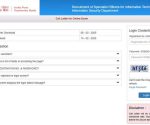What’s wrong with America’s math education? – The Times of India

What’s wrong with America’s math education?
In an age where data drives almost every aspect of our personal, professional, and civic lives, America’s math education is facing an urgent dilemma. While the world continues to evolve at a rapid pace with technologies like artificial intelligence (AI), machine learning, blockchain, and neural networks, the math curriculum in most K-12 schools remains largely unchanged. The growing demand for data science and statistical literacy in today’s workforce stands in stark contrast to the current state of math education, where topics like algebra and calculus are still prioritized at the expense of practical, data-driven skills.
With an alarming decline in student achievement in subjects like data analysis, statistics, and probability, America’s education system risks leaving an entire generation ill-prepared for the future. The national math test scores from the National Assessment of Educational Progress (NAEP) show a concerning drop in these essential areas, particularly after the introduction of the Common Core standards. Introduced in 2010, the Common Core was designed to create consistent educational goals across states and ensure that all students are prepared for college and careers. However, critics argue that the shift in focus toward standardized testing and the emphasis on traditional subjects like algebra and calculus may have diverted attention from newer, critical subjects such as maths, data science and statistical literacy. Moreover, the disparity in student outcomes across racial and socioeconomic lines underscores a larger systemic issue—one that impacts not just individual futures but the country’s competitiveness in an increasingly data-centric world. The need for change is clear, but the path forward remains uncertain.
Here are the key challenges that contribute to this crisis in America’s math education system, which are preventing students from acquiring the data literacy skills necessary for success in today’s technology-driven world.
Math anxiety
One major issue with America’s math education system is the high levels of anxiety students experience when engaging with math. This fear often stems from outdated teaching methods, where rigid concepts like algebra and calculus dominate the curriculum, leaving students feeling disconnected from math’s practical applications. As a result, many students struggle to see how math matters in the real world. By integrating subjects like data science and statistics—fields that are relevant to today’s workforce—we can make math more engaging, show its real-world applications, and help reduce math anxiety.
Lack of data literacy
There’s a critical gap in equipping students with essential data literacy skills, which are crucial for understanding and navigating the modern world. With the rise of technologies like AI, machine learning, and blockchain, data literacy is more important than ever. Yet, as reported by The Hechinger Report, national math test scores for data analysis, statistics, and probability have declined since 2011. This suggests that these areas are not being adequately prioritized in K-12 curricula. The focus on traditional subjects like algebra and calculus means that students are not learning the skills they need for future careers in fields such as data science and technology. Moreover, the inability to reduce math anxiety is a significant barrier—many students still struggle to see math as relevant, which affects their ability to grasp foundational concepts early on.
The importance of basic arithmetic
Before students can dive into complex subjects like algebra and calculus, a solid foundation in basic arithmetic—addition, subtraction, multiplication, and division—is essential. These fundamental skills form the bedrock for more advanced topics and real-world applications, including data science and statistical analysis. Teachers must emphasize these core concepts to ensure that students have a strong mathematical foundation before advancing to higher-level topics.
Outdated instructional focus
While algebra and calculus still hold importance in college admissions, they no longer align with the needs of today’s rapidly evolving job market. The emphasis on these traditional topics has pushed more relevant subjects like statistics and data science to the sidelines. As technology advances rapidly, the gap between math education and the skills required by the modern workforce grows. As noted by The Hechinger Report, industries are increasingly seeking workers who can analyze data and make informed decisions based on it. However, our current math education system remains focused on outdated topics that don’t address these needs. This outdated focus is evident in the teaching of basic arithmetic and foundational skills, which are often neglected in favor of more abstract concepts that many students struggle to understand early on.
Achievement gaps
One of the major challenges in American math education is the vast achievement gap between different racial and socioeconomic groups. As reported by The Hechinger Report, Black students are, on average, 30 points behind their white peers in data analysis skills. This gap in achievement perpetuates inequalities in access to higher education and job opportunities in fields like data science and technology. Many schools in low-income areas also struggle to provide modern, data-driven math education due to limited resources, further widening the gap between students from different backgrounds. This disparity starts early, with preschool and kindergarten math instruction being often insufficient to provide a strong foundation for later grades. Without a solid grasp of basic arithmetic and numeracy skills at an early age, students enter more complex subjects unprepared and anxious.
Teacher constraints and curriculum limitations
Teachers are constrained by outdated state standards and testing requirements that prioritize traditional math content over data science. This leads to insufficient coverage of data analysis and computational topics, contributing to declining math performance in these areas. Teachers report that there is often not enough time in the curriculum to focus on emerging subjects like data science. The Hechinger Report highlights how the overemphasis on algebra and calculus leaves little room for instruction in more relevant topics, further perpetuating the skills gap. Many teachers, especially at the early education level, struggle with outdated instructional methods that focus too heavily on rote memorization and standard algorithms rather than engaging students with practical, real-world math applications. This lack of relevance leads to disengagement, increasing the fear or anxiety many students experience when approaching math.
Insufficient data science programs
Despite some promising initiatives in states like Ohio, Virginia, and Utah, comprehensive data science education at the K-12 level remains scarce. Only a handful of states provide robust data science curricula, and many states still fail to offer sufficient resources and programs for teaching data science. As noted by The Hechinger Report, while there are experimental programs in a few states, comprehensive data science instruction is still rare across the country, leaving many students without access to this critical area of learning. Without early exposure to data science and computational thinking, students are left behind in a rapidly advancing world. These subjects should be introduced alongside or even before more abstract math topics like algebra to help students understand the real-world relevance of math.
Interestingly, when students are exposed to data science, they show high levels of engagement and interest. The Hechinger Report has found that students actively seek further opportunities to learn about data science, indicating that they find these subjects relevant and exciting. This highlights the importance of making data science a core part of the math curriculum to foster student interest and prepare them for careers in emerging fields. However, the disconnection between traditional math education and career readiness has left many students disengaged and unsure about how math applies to their future. It’s critical to help students see the connection between data science, math, and careers in technology, especially if we want to reduce math anxiety and ensure that they are motivated to succeed.
The way forward
To address this, we must update the K-12 math curriculum to include data science and statistical literacy. Schools should focus on providing every student with the basic skills to interpret and work with data, regardless of their background. By doing so, we can better prepare students for the challenges of the modern world and ensure they are equipped for future success. Teachers need more professional development to adapt to these new teaching methods and curriculum shifts, and math instruction should be made relevant to students from an early age to reduce anxiety and make math engaging and meaningful.
















